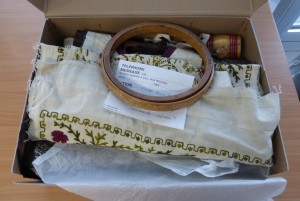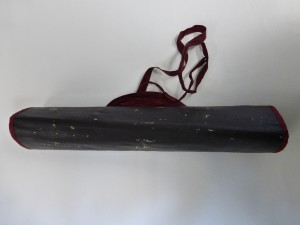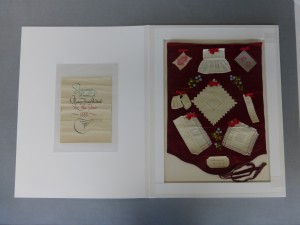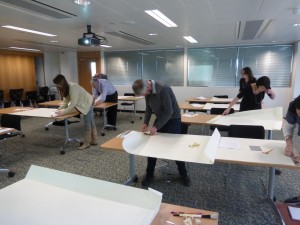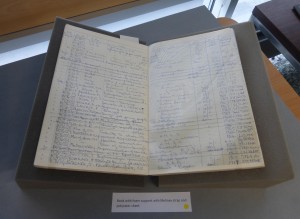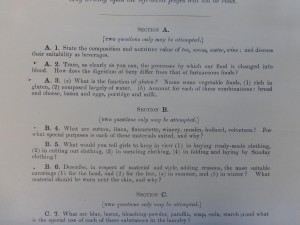At the beginning of June I began working with the Moray House Archive at the CRC. It’s been a fantastic collection to work with, as every box I have opened has contained something new and presented different conservation problems.
My favourite so far has been a box containing craft work donations. It held five needlework samples, a cotton dress and an embroidery piece. The needlework samples were mounted on a piece of faux leather, which had been rolled tight and stiffened over time, so that it was difficult to view. Since these items were relatively small, I decided it would be best to store them flat so reduce excessive handling of the samples which could lead to further damage.
First the samples needed to be flattened as they had a tendency to curl at the edges. To do this, I carefully held the corners down with glass weights and left them overnight, after which they remained flat by themselves.
I then made a bespoke folder for each item. The folders were made from unbuffered mount board, with a domette and calico cotton layer to provide cushioned support for the samples. The edges were built up using strips of mount board and sealed with linen tape. The cushioned support can be made for the upper and lower side of the folder so that the items can be closed, flipped over, and then opened up again to view the back, without touching the item at all.
This new housing will prolong the life of these textiles and provide an easy way for them to be displayed in the future.
As a part of my time working with the archives collections, I have also hosted two conservation workshops for CRC staff. In the first workshop, I described basic conservation techniques that archivists could use at their desk to improve the condition of the collection. During the session staff had a go at surface cleaning, removing metal fasteners (staples and paper clips) and rehousing techniques such as making a book shoe. The second session focused on the using archival material in outreach workshops. I described ways of protecting objects when using them with groups of people and also how to present them in ways to avoid excessive handling.
I have really enjoyed working with this collection. The diversity of objects and the range of activities involved have been very interesting. Throughout the collection there are humorous and curious items that have always made me smile when working through the shelves. I’ll leave you with a couple of my favourite to enjoy!
Emily Hick
Project Conservator


